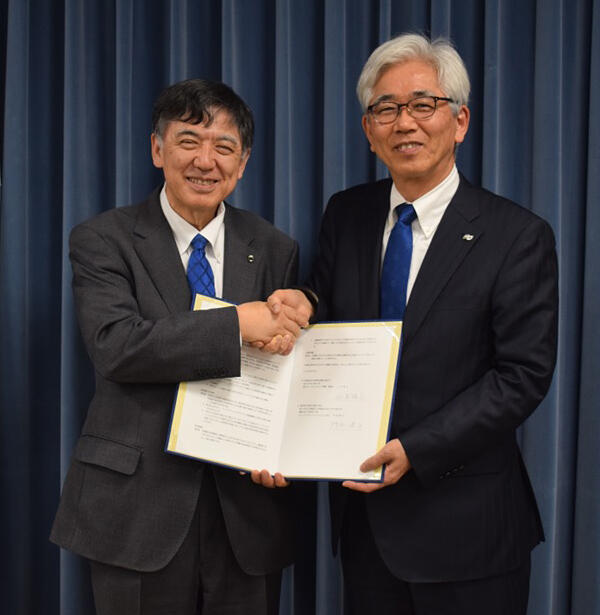The Institute for Glyco-core Research of Nagoya and Gifu Universities and the Tohoku Medical Megabank Organization (ToMMo) have signed a memorandum of understanding to collaborate on the Human Glycome Atlas Project (HGA) and the Tohoku Medical Megabank Project. From April onward, glycans from blood samples of the Megabank will be analyzed at the Institute for Glyco-core Research, and a follow-up analysis will be conducted jointly. A diverse range of information registered with the Megabank includes genome, protein, and disease data. Adding glycan data to this information is expected to bring about significant results, such as advancing life sciences, understanding diseases, and developing new drugs and treatment modalities.

Glycans are essential molecules for life; however, the amount of information on glycans has been insufficient due to how difficult they are to analyze. Like the Human Genome Project and the Protein 3000 Project, the HGA aims to innovate life science by comprehensively analyzing human glycans to build a Glycan Knowledge Base (TOHSA) and make glycan information accessible to anyone.
The HGA was launched in 2023 as an Academic Frontier Promotion Project supported by the Ministry of Education, Culture, Sports, Science and Technology (MEXT), under the leadership of the Tokai National Higher Education and Research System as the core institution, the National Institutes of Natural Sciences, and Soka University.
The Tohoku Medical Megabank Project was launched in fiscal year 2011 by Tohoku University and Iwate Medical University as part of efforts to recover from the aftermath of the Great East Japan Earthquake with support from the AMED and MEXT. The ToMMo has played a central role in this project.
The Megabank has built a cohort of more than 84,000 healthy community residents and a three-generation cohort of more than 73,000 people, including three generations of children, parents, and grandparents. It has data on lifestyle habits and detailed medical examinations beyond complete medical checkups and biological specimens such as blood and conducts follow-up surveys every few years. The collection includes approximately 5 million tubes of biological specimens, such as DNA, serum, plasma, and urine, and about 30 petabytes of disease and medical examination information. The analyses include whole genome information and omics analysis, but glycan analysis has been difficult.
Kenji Kadomatsu, Director of the HGA and the Institute for Glyco-core Research, said, "Over the past 2 years, we have been able to set up the technological infrastructure as planned, and now we move on to data acquisition in earnest. Glycoscience is a field in which Japan has led the world so far. Through the just-announced collaboration with the Tohoku Medical Megabank Project, we can expect efficient and synergistic progress and the world's best research results for both projects, in which large taxpayer funds are being invested. Moreover, the HGA will acquire new detailed glycan data on a large number of samples theoretically collected by the Tohoku Medical Megabank. The Tohoku Medical Megabank and HGA will jointly analyze the obtained data. Adding data on glycans, the last piece missing in life science, to genome and other data will majorly contribute to life science and medicine and potentially to health care."
Masayuki Yamamoto, Executive Director of the Tohoku Medical Megabank Organization, said, "The just-announced collaboration with the Institute for Glyco-core Research adds glycan analysis to our composite biobank lineup. Glycans have complex structures and are difficult to analyze. There is no place in the world where glycan research is conducted on a large scale at the biobank grade. On the other hand, the Institute for Glyco-core Research has boldly worked on glycan analysis and established a solid information base. With the addition of glycans, our challenge for realizing personalized prevention and personalized medicine will be greatly upgraded."
This article has been translated by JST with permission from The Science News Ltd. (https://sci-news.co.jp/). Unauthorized reproduction of the article and photographs is prohibited.




